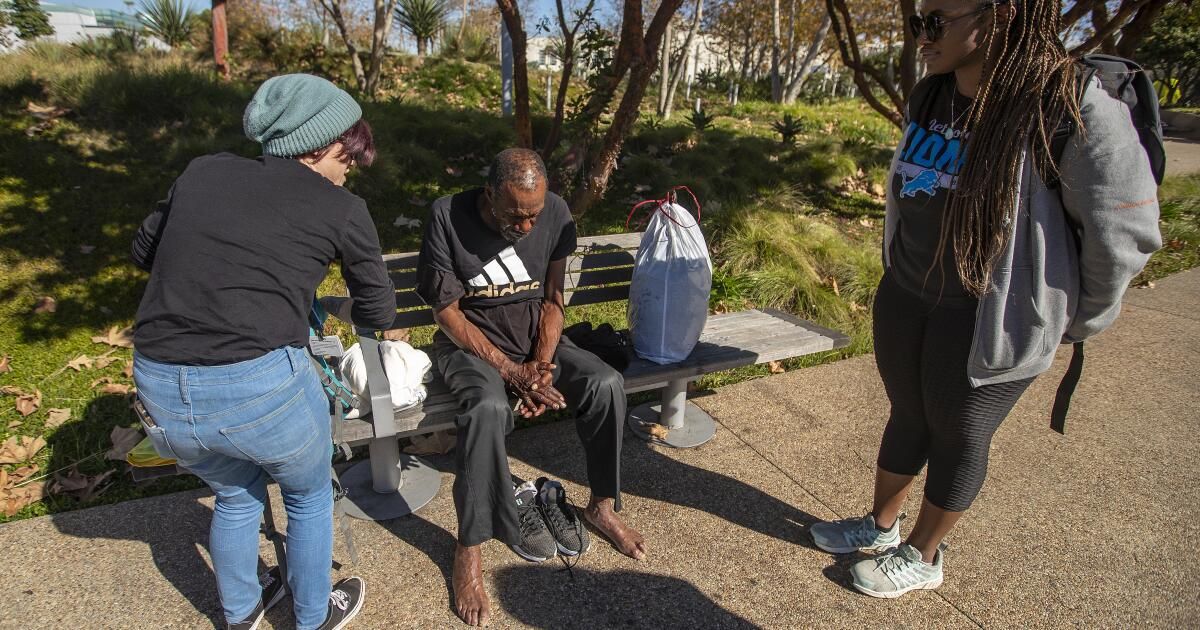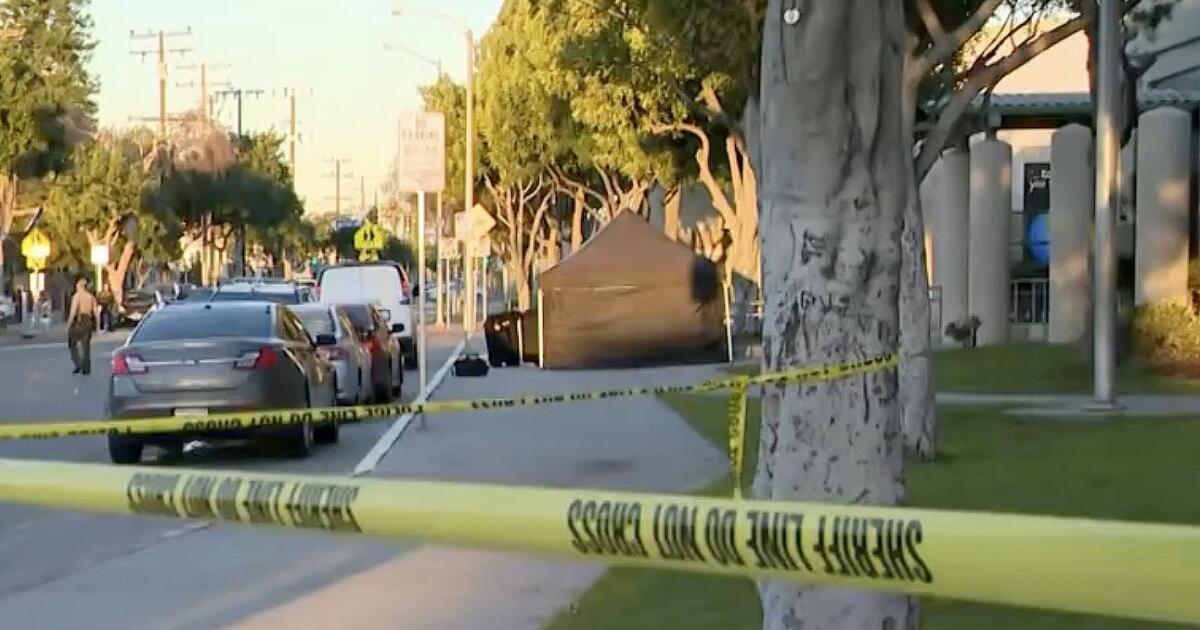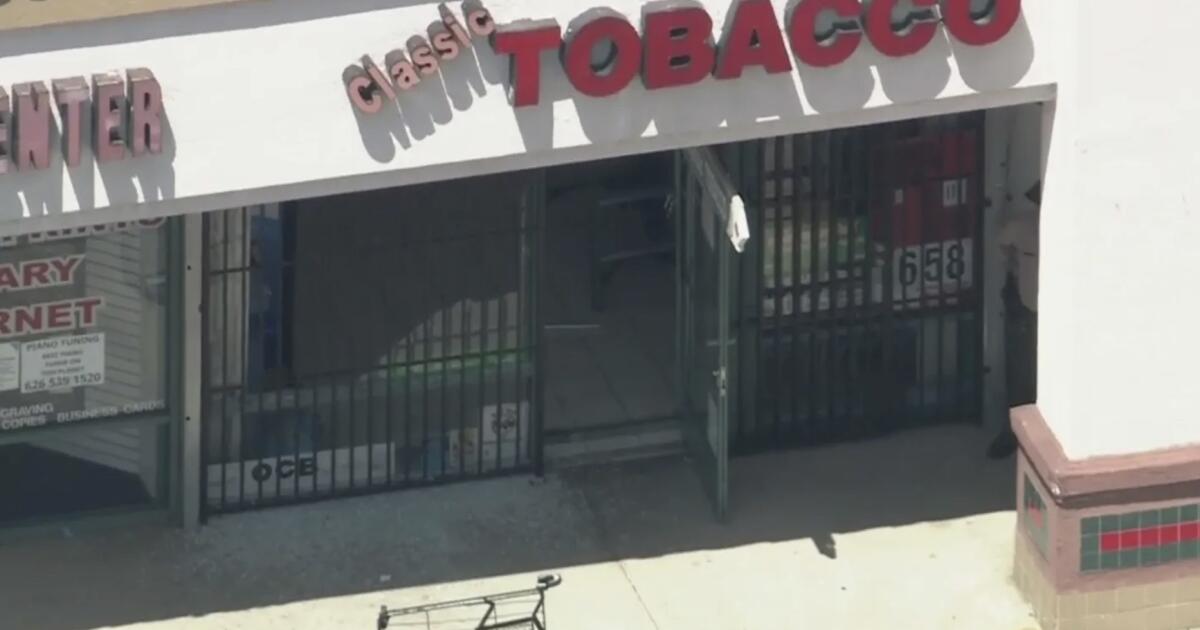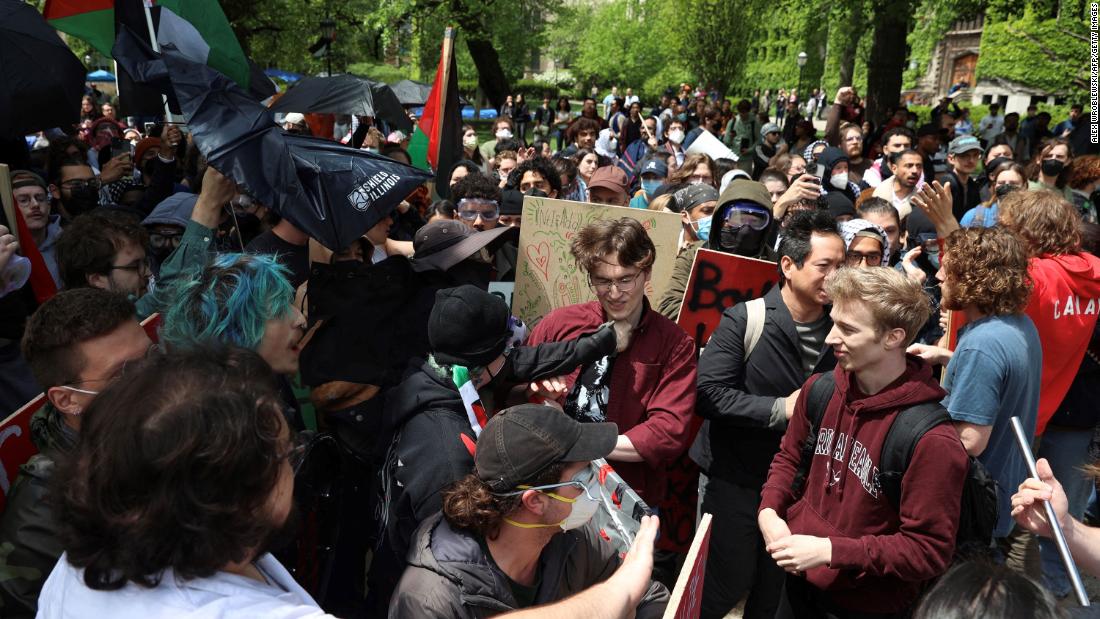A closely divided Santa Monica City Council voted this week to remove a section of its anti-camping ordinance that allowed homeless people to use pillows, blankets and sleeping bags while sleeping outdoors.
In a 4-3 vote, the council reversed a move taken in 2022 to comply with a federal appeals court ruling that declared it unconstitutional to prohibit people from “protecting[ing] “People living in rural areas have to protect themselves from the elements when there is no shelter space available.” The Supreme Court reversed that decision three months ago.
The council majority also directed administrative, housing and law enforcement staff to look into how other municipalities are addressing homeless encampments. The amended ordinance, which is expected to be formally adopted later this month, is scheduled to take effect in mid-October.
While Santa Monica does not prohibit sleeping on public property, it does prohibit camping. The amendment means that Santa Monica police officers will have more discretion over what constitutes camping on public property, and therefore more leeway when issuing citations or making arrests.
The amendments will also provide city prosecutors with more evidence to use in criminal cases.
Critics say the changes are cruel and will bring additional hardship to an already vulnerable population that may decide to throw away pillows and blankets to avoid violating the ordinance.
A homeless man packs his belongings during a homeless encampment cleanup at Dockweiler State Beach in Playa del Rey on August 22.
(Genaro Molina / Los Angeles Times)
Advocates say the change will give police an additional tool to engage with homeless people and build relationships in an effort to encourage them to get off the streets.
Police Chief Ramon Batista told council members before Tuesday's vote that the amendments would not change how officers enforce anti-camping laws and interact with the city's homeless population.
“We are not regulating sleeping in public spaces,” he said. “We are regulating encampments in public spaces and we have been successful because we follow the guidelines on how to address these people in cases where they are starting to build an encampment.”
Jenna Grigsby, chief of the Criminal Division for the city attorney's office, said officers have been trained to look at the totality of the circumstances to prove someone is camping, not just sleeping, in a public space.
“I’ve been doing this to the point where I understand what camping means, and it’s not just about an object” in the homeless person’s possession, he said. “You have to be able to prove that this person has occupied the public space for the purpose of living there.”
City officials say that under the amended anti-camping ordinance, a blanket and pillow would not be enough to prove someone is camping on public property.
Batista, however, acknowledged that the articles would give officers a reason to detain homeless people.
Councilwoman Gleam Davis disagreed with that tactic and suggested officers approach people who are willing to talk to them. Batista said officers do that, too.
Councilwoman Caroline Torosis expressed concern that enforcement would primarily affect Black and Latino people, who make up a large portion of the city's homeless population.
“The same fines and citations can become a barrier to obtaining Section 8. [housing aid]“We need to help people with rehabilitation measures, not punitive measures,” Torosis said.
Davis, Torosis and Councilmember Jesse Zwick voted against the changes, while Mayor Phil Brock, Mayor Pro Tem Lana Negrete and Councilmembers Oscar de la Torre and Christine Parra cast votes in favor.
Brock, who is running for re-election, has long argued that compassion for the homeless sometimes turns into neglect. He said he supported the ordinance in an effort to encourage people to stay home.
“How can we accept people living on our streets, in alleys or in garages for days, weeks and months?” he asks. “I don’t care if they have a pillow, a backpack, a tent or a kitchen, they are living on our streets and they are being neglected.”
The changes to Santa Monica’s ordinance come as other California cities are cracking down on homeless encampments in response to the Supreme Court’s June ruling in Grant Pass v. Johnson. In a 6-3 decision, the justices held that laws penalizing homeless people for sleeping or setting up tents in public spaces do not constitute cruel and unusual punishment.
The landmark decision ended years of protections for homeless people and paved the way for California cities to begin clearing encampments from parks, sidewalks and other areas even when they lack enough shelter beds.
Santa Monica, known for its progressive stances on many issues, now joins other cities that have taken a more aggressive approach when it comes to encampments they consider problematic.
The same night the city passed its controversial amendments, the Berkeley City Council adopted new rules that would allow city workers to clear homeless encampments without first offering shelter.
However, Berkeley's rules apply only to camps that pose a fire hazard, pose a health risk or impede the operation of public services.
Last month, Newport Beach strengthened its anti-camping laws, which prohibit storing belongings on public property, and expanded the definition of camping to include people sleeping in vehicles. City leaders also assigned more officers to handle calls related to homeless people.
That same month, the city of Long Beach began clearing out encampments that were deemed a threat to public health and safety or where homeless people were resisting services. The city said that while its goal would be to get people into shelters, it would also give police the discretion to issue citations and possibly make arrests.
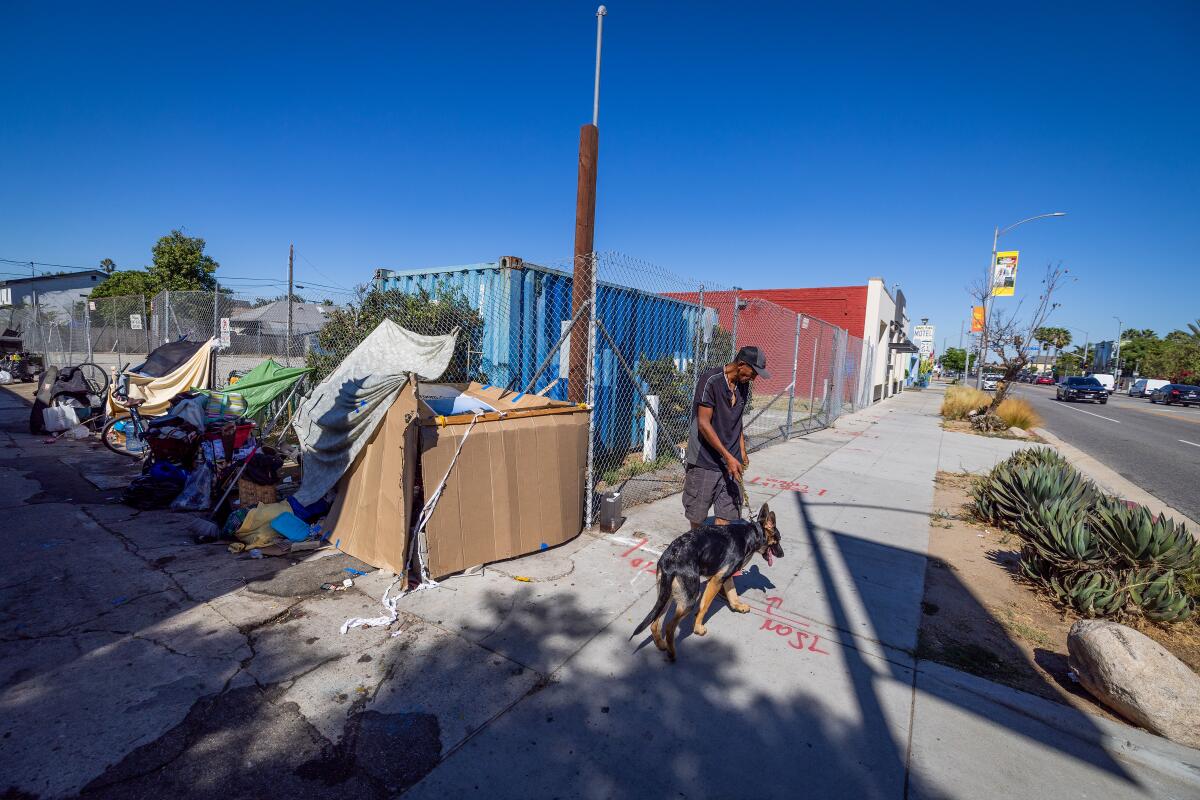
Miguel Angel Gonzalez Martinez, 42, and his dog Lincoln in Long Beach.
(Allen J. Schaben/Los Angeles Times)
Santa Monica has long grappled with the problem of homelessness, but a recent wave of crime on the city's boardwalk and beaches where tourists gather has raised concerns about public safety.
“I see our residents who are… frustrated as hell because there are [homeless] “People are in their alleys and on their streets,” Brock said. “And for whatever reason, unjustified or not, they are afraid of their own city, they are afraid of a place that they came to because we have the best climate for them, we have palm trees, a beautiful ocean and great parks and now they are afraid to use them.”
“I think we need to have that part of the discussion,” he said.
According to the latest annual count, there were approximately 774 homeless people in Santa Monica in January, which is a 6% drop from 826 in 2023, according to the city's most recent homeless count. At least 62% of that population was living outdoors.
City officials said homelessness prevention programs, combined with enforcement of its anti-camping laws, have prevented encampments from springing up to the extent seen in other cities.
The city also has shelters to get people off the streets, although the city has 100 fewer beds than needed to fully accommodate the unsheltered population.
Tuesday night's amendments stem from a July City Council meeting in which Negrete and de la Torre asked the city manager and city attorney's office to “evaluate and provide options for amending the city's municipal code” in light of the Supreme Court's decision.
In supporting changes to the ordinance, Brock and Negrete at times outlined a homeless population made up largely of drug addicts and people with mental illness.
“I think we’re trying to paint a picture of women and children and people with babies shivering outside and that’s our homeless population, I know it exists somewhere,” Negrete said. “But I think what we’re seeing and what we’re responding to is the fact that we have a mental health crisis and a substance abuse crisis, and the majority of people on our streets are experiencing those things…”
The couple also implied that many of the homeless are not from the city, despite numerous research studies showing that the vast majority of homeless people have ties to the places where they live.
At one point, Brock accused San Francisco and Vancouver of sending homeless people to Southern California, where they then end up in Santa Monica.
“I'm getting reports from LAX that people are getting off these planes, they're homeless and they're asking where Venice is, where Santa Monica is,” he said.
Cities in the United States have relocation programs to help homeless people move to places where they have relatives who will care for them.
Zwick questioned whether the changes to the ordinance were necessary.
“I’ve heard that this isn’t going to change anything, but I’ve also heard that it’s very important that we change,” he said. “Either it’s going to do something very different, which worries me because I think we do things pretty well here, or it’s going to do nothing, and then we’re all just putting on a lot of drama here to pretend that we’re doing something.”
Negrete explained that the purpose was to remove language added to the ordinance two years ago and make it less easy for people to sleep outdoors.
“We don’t want to create an environment where people can sleep outside,” he said. “We have services and service providers, and we certainly need more, but why not create an environment where we say we want to be able to participate and encourage people to get those services?”

